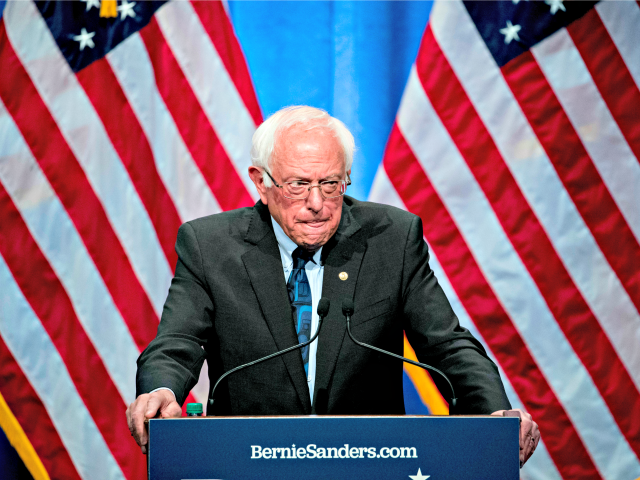Senator Bernie Sanders released a bill Monday that would cancel all outstanding student debt. But it does little to stop the student debt problem from arising once again–and may even make it worse.
The Sanders bill would cancel all of the roughly $1.5 trillion in student debt for 44 million Americans, including debt owed by wealthy individuals, debt owed to private lenders, and debt owed to the federal government’s loan programs. It would also attempt to make college education at state schools free to students, paid for by a combination of state and federal spending.
By Senator Sanders’ estimate, the bill would cost approximately $2.2 trillion. But the cost could eventually be much higher because the bill largely leaves in place the current system of federal student lending, which means the next generation of college students could once again build up unsustainable levels of debt.
And that, in turn, will invite another round of debt forgiveness.
Sanders plan does not actually cancel college debt. It shifts the burden from former students to taxpayers. And going forward, far from canceling student debt, it lets current and future students continue to rack up debt–but now with the expectation that those loans will not have to be repaid because another round of forgiveness is likely in the offing. It does nothing to force colleges to hold down the cost of education to levels that students can be expected to repay in the future.
This moral hazard risk is a standard part of the economic analysis of debt relief. The very economists whose work appears to be behind Sanders’ plan explained in a paper that “debt relief today could change the incentives of future student debtors who may increase borrowing with the expectation that the loans will be forgiven, causing an even faster accumulation of debt and increasing the negative consequences at the household, local, and macroeconomic levels.”
“The perverse incentives for unsustainable borrowing in this scenario are the result of inappropriate policy institutions that absolve borrowers of their debts while perpetuating the necessity of increasing debt,” Scott Fullwiler, Stephanie Kelton, Catherine Ruetschlin, and Marshall Steinbaum wrote in their 2018 paper looking at the economic effects of canceling student debt.
Sanders’ plan to subsidize state colleges with federal matching funds may be an attempt to combat moral hazard. At least some students, faced with the choice of borrowing or attending a free state school, will choose the free state school. But the moral hazard created the initial debt cancellation will likely lead many students to conclude that the choice is irrelevant because the federal government will wind up paying off their debt also.
And another feature of Sanders’ plan could exacerbate the problem. Under his plan, student loan interest rates would be capped at the government’s borrowing costs. But lowering the cost of borrowing encourages borrowers to take on more debt.
Nothing in the plan incentivizes colleges to rein in their costs or pay a penalty for students who leave, after graduation or before, with debt burdens that become unsustainable.
There are alternatives. The government could end the student loan program altogether, forcing private colleges to finance their students through private loans or reduced costs. It could also require colleges to bear some of the burden of nonpayment, discouraging colleges from overcharging and overburdening students with debt. Alternatively, the government could replace its student loan programs with equity-like funding that would require students to pay a fixed percentage of their income, eliminating the problem of loans becoming unaffordable.
Sanders plan recognizes that student loans are a problem for the United States, holding back economic growth, investment, home ownership, upward mobility, and family formation. The Department of Education estimates that 26% of federal undergraduate student loans made in 2018 will enter default at some point–no one’s definition of a sensible program.
But it proposes only a bandaid for the problem, a temporary fix that will only encourage the wound of unsustainable college debt to fester and grow worse.

COMMENTS
Please let us know if you're having issues with commenting.